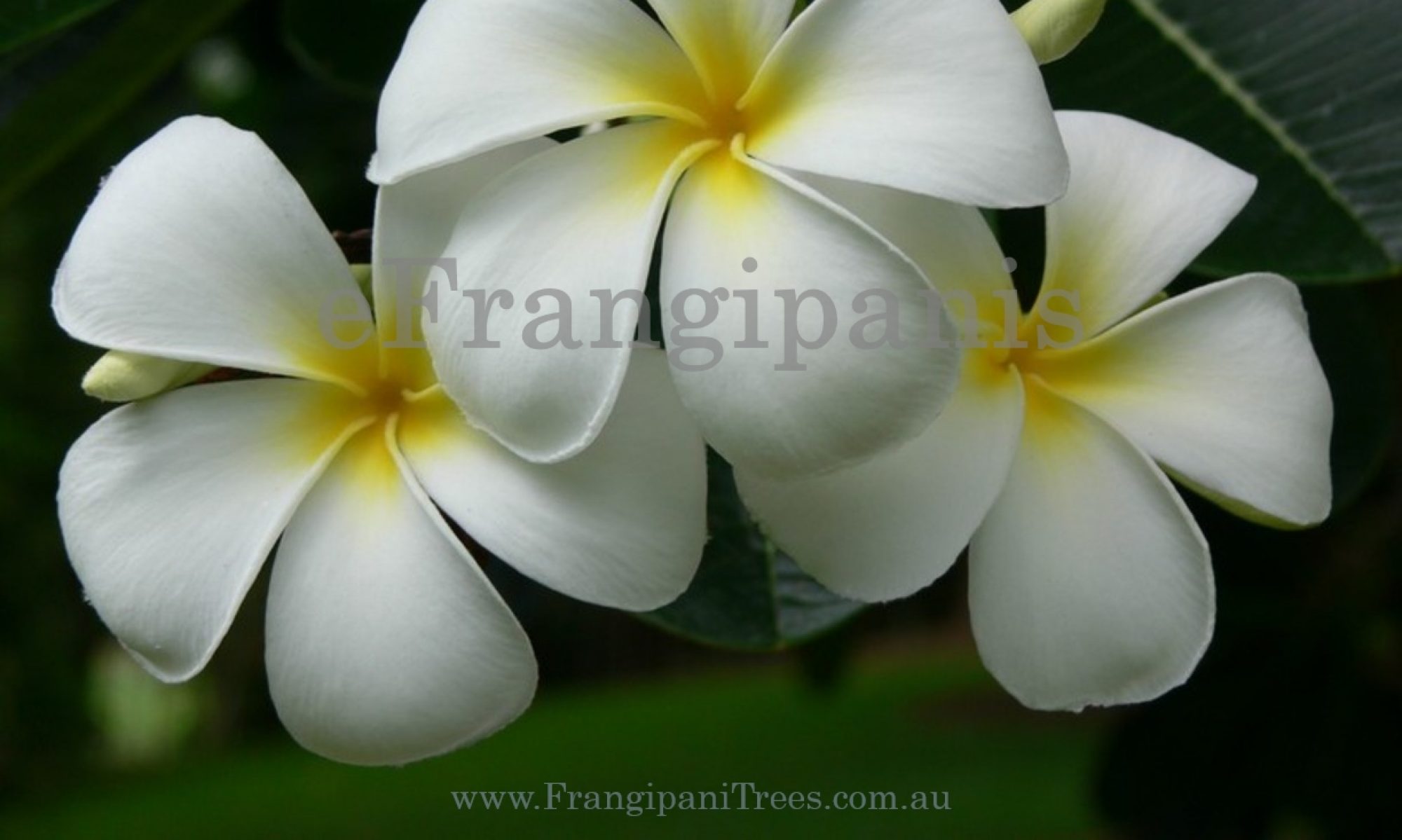If you have decided your favourite frangipani flower is the traditional white (yellow throat), light pink or orange, you shouldn’t have much trouble finding a nicely shaped healthy one.
If you’ve seen a Singapore frangipani and were amazed by it’s glossy leaf and large scented flower, you probably won’t consider anything else until you get a Singapore for yourself.
If you think of your frangipani as an investment, paying 2 or 3 times the price for a similar size frangipani plant can increase your return ten fold.
One advantage of getting a popular variety as opposed to a common variety is its future value. If you plant a number of small frangipani plants, you might want to get rid of one or two when they get 2 or 3 metres tall. If they are a rare or unique variety, you’ll be able to sell them easily for a good price. If your special frangipani grows into a large tree, any branches you prune off will be valuable cuttings and a treasured gift to any gardener.
Keep in mind that rare frangipanis are rare usually because they are more delicate and more difficult to grow. Although growing rare frangipanis can be a challenge, growing them to an advanced size will no doubt be a great reward.
Unusual Frangipani Species
The pudica produces and abundance of vibrant white flowers. The stenophylla has needle like leaves and small and cute flowers. The Singapore has glossy leaves and a large scented flower. The petite pink is a dwarf and also has glossy leaves. The petite pink has small and slightly scented flowers and is one of the more challenging frangipanis to grow.
Unusual Frangipani Rubra
Within the rubra species, there are scented and beautifully coloured flowers which will be collector items for future generations. Some of our favourite varieties which are also hardy are the Hot Pink, the Firecracker and the amazing Sharna’s Rose. The Blood Red, the Black red and the Kimberley Sunset are also impressive and popular flowers but more delicate.
While the frangipani rubra species is the hardiest, the frangipani obtusa has beautiful glossy leaves and is a popular choice for the Gold Coast, Brisbane and the Sunshine Coast. Along with the glossy leaves, the Singapore frangipani has a large flower with the traditional white with yellow throat, has a rounded petals and a strong scent.
Frangipani Species
Firstly, frangipanis with a distinct type of leaf are grouped into a species. Within each species, especially the common 3 species rubra, obtusa and pudcia, there is more than one flower type.
Changing Colours
Many coloured frangipani flowers, notably light pinks and yellows, start off with vibrant colours and fade in sunlight to white. If you look closely, some frangipani flowers have three or more distinct colours, often red, pink, yellow, and orange, however, if you look at a frangipani flower from a distance, its colours will merge and all the flowers will appear a single colour.
Frangipani Flower Colour Groups
Flowers are often grouped according to colour.
Pink (From baby pinks through to dark and hot pinks)
Cream (Mostly white and yellow flowers)
Orange (Includes many tricolours and multi-coloured flowers)
Red (From blackish reds to pinkish reds)
Yellow (with little or no white)
Blues and purples are usually included in the pink category.
Frangipani Flower Shape groups
There are many types of frangipani flowers shapes so naturally its possible to group them according to shape but that’s a subject for another time. Some obvious groups are shells, pinwheels and double flowers.
When buying a frangipani, you can choose from a range of sizes from a 50mm single-stem frangipani plant to a 2 or 3 metre established frangipani tree.
Flowers – Frangipanis produce flowers from the ends of the branches (crowns). Buying a larger frangipani with many branches will increase the chances of flowers each year.
Impact – Many people purchase a frangipani for an established garden or to be displayed as a feature tree. A larger frangipani will have a greater influence in the style of the garden or yard and will be more noticeable.
Strength – The more wood and the more roots a frangipani has, the stronger it is. Small frangipani can deteriorate more quickly if conditions are unfavourable and can be damaged more easily.
Price – A frangipani twice the height is likely to be around twice the price.
Freight – Most of our past Melbourne And Adelaide customers chose to purchase a frangipani tree priced between $250 to $500. Most of our past Sydney (including Newcastle, the Central Coast and Wollongong) customers chose to spend more than $150 and up to $1000 before freight.
Postage – If you order frangipanis to be mailed, you are usually limited to single stem plants with a stem of 15 to 20 centimetres long.
Both bagged and ex-ground frangipani trees have their advantages.
Bagged trees can be moved around and transplanted with minimal disruption to the roots. They can be transported standing up so even a loosely tied rope will make sure they stay upright. Freight space is calculated by floor space so an upright tree will cost less to transport than a tree on its side.
Frangipanis usually grow faster in the ground so bigger frangipanis can be sold more cheaply. If the frangipani tree is too tall to stand up in the delivery truck and it needs to be transported on its side, a larger cheaper ex-ground specimen might be the better option.
